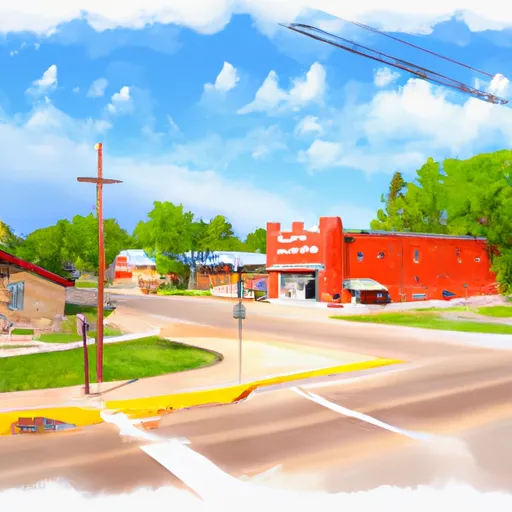-
 Snoflo Premium
Snoflo Premium
Get unlimited access to all our content
With no Ad interruptions! - Start Your Free Trial Login with existing account
Babbitt
Eden Index
Climate
4.8
•
Recreation
4.3
•
Community
2.2
•
Safeguard
3.9/10

Babbitt is a small city located in St. Louis County, Minnesota. The climate in Babbitt is characterized by cold winters and mild summers. The city is situated near several lakes and rivers, including Birch Lake and the St. Louis River. These bodies of water provide opportunities for fishing, boating, and swimming. Babbitt is also located near the Boundary Waters Canoe Area Wilderness, which offers numerous outdoor recreation opportunities, including hiking, camping, and canoeing. The hydrology constituents in the area include minerals such as iron ore and copper, which have historically been important industries in the region. Today, Babbitt is a popular destination for outdoor enthusiasts looking to explore the natural beauty of northern Minnesota.
What is the Eden Index?
The Snoflo Eden Index serves as a comprehensive rating system for regions, evaluating their desirability through a holistic assessment of climate health, outdoor recreation opportunities, and natural disaster risk, acknowledging the profound impact of these factors on livability and well-being.
Climate Health Indicator (CHI): 4.8
Babbitt receives approximately
717mm of rain per year,
with humidity levels near 83%
and air temperatures averaging around
4°C.
Babbitt has a plant hardyness factor of
3, meaning
plants and agriculture in this region thrive during a short period during spring and early summer. Most
plants will die off during the colder winter months.
By considering the ideal temperature range, reliable water supplies, clean air, and stable seasonal rain or snowpacks, the Climate Health Indicator (CHI) underscores the significance of a healthy climate as the foundation for quality living.
A healthy climate is paramount for ensuring a high quality of life and livability in a region, fostering both physical well-being and environmental harmony. This can be characterized by ideal temperatures, reliable access to water supplies, clean air, and consistent seasonal rain or snowpacks.
Weather Forecast
Streamflow Conditions
Rainy
Area Rivers
Rainy
Snowpack Depths
Rainy
Reservoir Storage Capacity
Rainy
Groundwater Levels
Recreational Opportunity Index (ROI): 4.3
The Recreational Opportunity Index (ROI) recognizes the value of outdoor recreational options, such as parks, hiking trails, camping sites, and fishing spots, while acknowledging that climate plays a pivotal role in ensuring the comfort and consistency of these experiences.
Access to outdoor recreational opportunities, encompassing activities such as parks, hiking, camping, and fishing, is crucial for overall well-being, and the climate plays a pivotal role in enabling and enhancing these experiences, ensuring that individuals can engage in nature-based activities comfortably and consistently.
Camping Areas
| Campground | Campsites | Reservations | Toilets | Showers | Elevation |
|---|---|---|---|---|---|
| Cadotte Lake | 27 | 1,657 ft | |||
| Brinton Timber | None | 721 ft | |||
| Birch Lake | 30 | 1,442 ft | |||
| Fenske Lake | 20 | 1,507 ft | |||
| Skunk River Access | None | 630 ft | |||
| Manhattan Bridge Access | None | 644 ft | |||
| Bear Head Lake State Park | 75 | 1,523 ft | |||
| Amnicon Falls | 35 | 833 ft | |||
| Fall Lake | 73 | 1,333 ft | |||
| Lucius Woods County Park | 24 | 1,110 ft |
Nearby Ski Areas
Catastrophe Safeguard Index (CSI):
The Catastrophe Safeguard Index (CSI) recognizes that natural disaster risk, encompassing floods, fires, hurricanes, and tornadoes, can drastically affect safety and the overall appeal of an area.
The level of natural disaster risk in a region significantly affects safety and the overall livability, with climate change amplifying these risks by potentially increasing the frequency and intensity of events like floods, fires, hurricanes, and tornadoes, thereby posing substantial challenges to community resilience and well-being.
Community Resilience Indicator (CRI): 2.2
The Community Resilience Indicator (CRI) recognizes that education, healthcare, and socioeconomics are crucial to the well-being of a region. The CRI acknowledges the profound impact of these elements on residents' overall quality of life. By evaluating educational resources, healthcare accessibility, and economic inclusivity, the index captures the essential aspects that contribute to a thriving community, fostering resident satisfaction, equity, and social cohesion.

